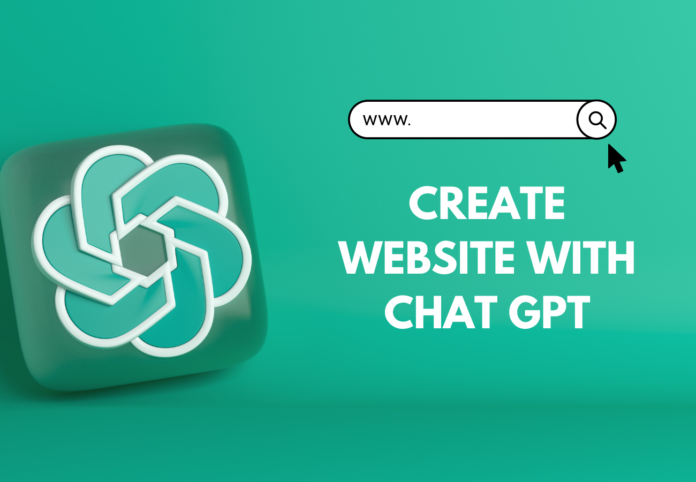In today’s digital era, websites have become indispensable to businesses and individuals. They serve as virtual storefronts, information hubs, and platforms for communication. As technology advances, web development has evolved to leverage the power of artificial intelligence (AI) in creating intelligent and interactive websites.
Among the AI models that have captured significant attention is ChatGPT. By integrating ChatGPT into a site, web developers Dubai can create chatbot-powered interfaces that can understand and respond to user queries, provide support, and offer personalised recommendations.
Whether answering frequently asked questions, assisting with customer support, or guiding users through a site’s functionalities, ChatGPT empowers sites to deliver a more interactive and tailored experience. This article will explore utilising ChatGPT to build a responsive website from scratch. So, let’s start!
Build A Responsive Website With ChatGPT From Scratch:
Now, let us describe some important steps a Dubai web designer should follow to create a responsive website with ChatGPT.
- Setting Up Your Development Environment
To build a website with ChatGPT, you’ll need to set up a development environment. It involves configuring a local web server like Apache or NGINX.
Additionally, it would be helpful if a web developer Dubai has the necessary tools, including a code editor for writing your website’s code, a version control system to manage changes, and a package manager for handling dependencies. These components will provide a solid foundation for developing your chatbot-powered site.
- Gathering Requirements
Before starting the development process, a web designer Dubai must identify the objectives and requirements for your chatbot-powered site. Determine the purpose of the chatbot and define your target audience.
Understand the specific functionalities you want to incorporate, such as customer support, answering frequently asked questions, or delivering personalised recommendations. Furthermore, clearly outlining these requirements will help guide the design and implementation of your chatbot.
- Designing the User Interface
Creating an engaging and user-friendly interface is essential for a chatbot-powered website. Utilise modern frameworks like React or Angular to build interactive components seamlessly integrating with ChatGPT. Design a chat window that provides an intuitive experience for users to interact with the chatbot.
Web Developers Dubai must also consider visual elements, typography, and colour schemes that align with your website’s branding. Strive for a design that is both aesthetically pleasing and functional.
- Integrating ChatGPT into Your Website
To integrate ChatGPT into your site, you’ll need to leverage OpenAI’s API. A web designer Dubai must sign up for an OpenAI account to obtain an API key and familiarise with the API documentation. Use the API endpoints provided to send user queries and receive responses from ChatGPT.
Ensure you handle authentication and rate limiting appropriately. This integration also allows your site to communicate with the language model and retrieve generated responses for user inputs.
- Training and Fine-tuning the Model
Training and fine-tuning the ChatGPT model is a crucial step to improving its performance and aligning it with the specific requirements of your website. While OpenAI provides a base model with strong language understanding capabilities, fine-tuning allows you to customise the model to suit your target audience and domain better.
Follow OpenAI’s guidelines and recommendations for training and fine-tuning. It typically involves running multiple iterations of pre-training and fine-tuning your dataset. During pre-training, the model learns from a large corpus of publicly available text data, while fine-tuning focuses on adapting the model to your specific use case.
A Dubai freelance web designer must also remember the ethical considerations and potential biases associated with training the model. Moreover, ensure that the data used for training is representative and diverse, and take steps to mitigate biases that may emerge.

- Handling User Inputs and Generating Responses
It would be best if you implemented the logic on the front end to handle user inputs and generate responses in your chatbot-powered website. When a user enters a query in the chat window, capture the input and send it to the server for processing. Use JavaScript libraries like Axios to handle API requests and responses efficiently.
Pass the user input to the ChatGPT API endpoint using the appropriate API call. The API will process the input and generate a response based on the trained model. Web Developers Dubai can also retrieve the generated response from the API and display it in the chat window, providing a seamless conversational experience for users interacting with your chatbot.
- Testing and Deployment
Testing and deployment are critical stages in confirming the functionality and reliability of your chatbot-powered website. Thoroughly test your site to identify and fix any bugs or issues. Furthermore, test different scenarios and edge cases to make sure the chatbot handles various user inputs effectively. Consider usability testing to gather feedback from potential users and make necessary improvements.
Once satisfied with the performance, a web designer Dubai can deploy the site to a hosting platform or a cloud server. Verify that the deployment process is smooth and your website is accessible to your target audience. Continuous integration and deployment practices can streamline this process and enable efficient updates and maintenance.
- Monitoring and Improving Performance
Monitoring and improving the performance of your chatbot-powered website is an ongoing process that requires continuous attention. Besides, check user interactions, collect feedback, and analyse usage patterns to understand how users engage with your chatbot. Identify any issues or areas for improvement and take necessary steps to address them.
Web Developers Dubai must regularly update and fine-tune your model based on the insights gained from monitoring. It can involve refining the training data, adjusting hyperparameters, or incorporating new features. Additionally, monitor server resources and scalability to ensure your site can handle increased traffic and maintain a smooth user experience. By actively monitoring and improving performance, you can also enhance the effectiveness and responsiveness of your chatbot, leading to a more satisfying user experience.
Winding Up!
Building a responsive site using ChatGPT opens new possibilities for creating intelligent and interactive web experiences. By leveraging the power of AI, businesses can enhance user engagement, offer personalised interactions, and ultimately drive success. With careful planning, the right tools, and a solid understanding of web development principles, a web designer Dubai can also harness ChatGPT’s capabilities to create a responsive website that exceeds user expectations. Embrace the potential of AI in web development, and embark on an exciting journey to build innovative websites.

